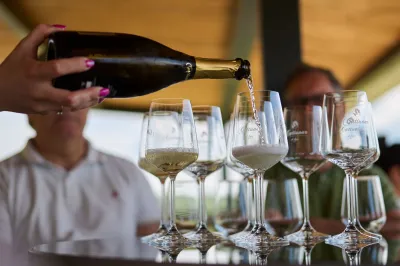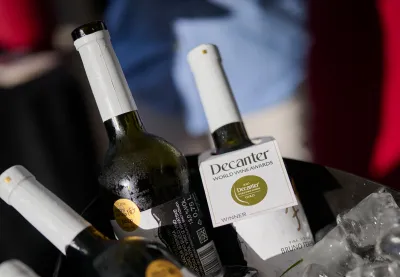Teran
During the 19th century, Teran was the most widespread grape variety in Istria (where it occupied more than 80% of the vineyard area) and was often mistakenly identified as Refosco. Today, it has been proven that Teran and Refosco (italian Refosco dal Peduncolo Rosso) are two different varieties.
Today, Teran plantings in Istria occupy about 230 ha and it is grown mostly in central Istria, since it thrives in the higher and airy vineyards facing south.
There are numerous historical records about the rich history of growing this indigenous Istrian variety, and some of the most famous are the classification of varieties grown in the area of Barban in Istria from 1824 by Canon Petar Stanković, as well as a professional article on Teran cultivation written by Karl Hugues, director of the Poreč Institute at the time, entitled Come si possa ingentilire il Terrano (How to soften the Teran) and published in the magazine La Provincia dell'Istria.
Colours and aromas
Colour
The color of the Teran ranges from garnet red to dark, almost purple
Aromas
Teran is known for its rich aromas of black and red fruits, such as sour cherries and sweet cherries, with notes of fern and blackberry. The range of acids and extracts gives strength of taste, full body, as well as pleasant and sumptuous tannins, leaving a sweetness on the tongue after the acids recede.
Relatively high acid content and noticeable astringency, in combination with a high extract that often exceeds 25 to 30 g/L, gives this wine a characteristically full and robust taste and opens up possibilities for coupages (blending) with other red varieties.
Due to the high amount of phenols (tannins and anthocyanins), Teran is also considered to have curative benefits.
Did you know?
The first mention of Teran is in a document from 1390 in which Marescalchi and Dalmasso state that 20 ingastaris (ceramic bottles) of Teran were presented to the king's envoy.
At the Wine Fair in Bolzano in 1886, and then in Bordeaux in 1887, Teran received poor ratings, which resulted in experimental vineyards in Pazin and Poreč with the aim of researching and developing suitable technological procedures for the production of this wine.
As early as 1902 in Turin, Teran received much higher ratings and was ranked alongside top Spanish and French wines (Despot, 1976).










































